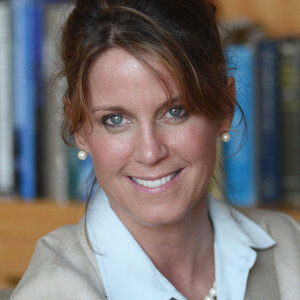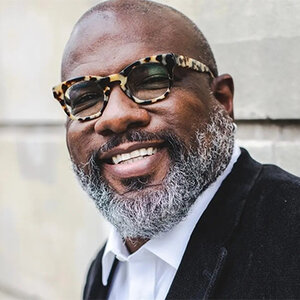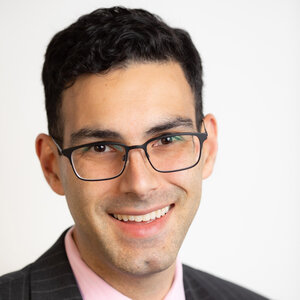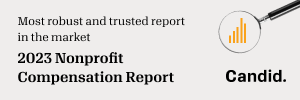Favianna Rodriguez, Co-founder and President, The Center for Cultural Power: To make the impossible feel tangible
September 25, 2023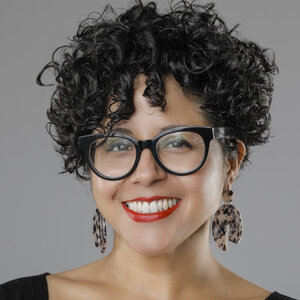
Favianna Rodriguez is co-founder and president of The Center for Cultural Power, an organization that works to shift culture at the intersection of art and social justice by investing in artists and storytellers as agents of positive social change. As an interdisciplinary artist and cultural strategist, Rodriguez has partnered with national organizations and progressive advocacy groups to design effective cultural campaigns and used her work to address issues of migration, economic inequality, gender justice, and climate change.
PND spoke with Rodriguez about her latest endeavor to promote women philanthropists through the Women Disruptors Giving Circle, the impact of MacKenzie Scott’s $11 million gift, and the narrative shift around migrants and immigration, and artists’ role in sparking dialogue and change.
Philanthropy News Digest: What was the impetus behind the Women Disruptors Giving Circle and how did it come about? Why is it important to focus on changemakers who identify as women, transgender, or non-binary?
Favianna Rodriguez: The work at the Center for Cultural Power is to shift culture—and to shift culture towards a more just world where all human beings can thrive in harmony with nature. In light of an intersection of issues, we are in an era of attacks on reproductive freedoms, trans rights, gender justice, reproductive justice. And we are in a climate crisis. For a lot of these battles, we need to build our cultural infrastructure. In Hollywood, for example, less than 2.8 percent of all scripted television programs and films between 2016 and 2020 2020 acknowledged the climate crisis. When we look at narratives around reproductive care, we’re not seeing abortion normalized in the culture presented back to us. As a cultural organization, we wanted to organize and make a call out to women philanthropists to support this critical work, because women are disproportionately affected by the culture wars, and women are very underrepresented in positions of power in the cultural sector.
As we’re aiming to shift culture, we also need to build cultural power. And we do that because the cultural sector is male-dominated—in every single cultural space, like film, television, publishing, theater, food, sports, music. What better way to resource the work of culture changers than by supporting a woman of color-led organization—which is us—and an organization that’s really building cultural power for BIPOC (Black, Indigenous, and people of color), women, trans, and non-binary people.
As a cultural organization, we wanted to organize and make a call out to women philanthropists to support this critical work, because women are disproportionately affected by the culture wars, and women are very underrepresented in positions of power in the cultural sector.
PND: What are the short-term and long-term goals of the Women Disruptors Giving Circle? Can you share how The Center for Cultural Power and the Civic Engagement Lab plan to use the funds raised?
FR: Overall, right now, we are in an era of feminist giving and trust-based philanthropy. The old structures that would hold philanthropy together are being questioned. Similarly, there is light being shone on how little women of color-led organizations receive in relation to the entire philanthropic investment. Our long-term goal is to build cultural power, to build narrative power, to be able to activate in moments when reproductive justice is attacked, and in key moments when we need to raise issues, for example, around climate next year. 2024 is an election year, and in 2020, we mobilized a lot of women voters. Women voters are our audience because Black women and Latina women move in ways that are beneficial to our communities and they are aligned with values that actually advance all of us.
Another of our long-term goals is to build a pipeline of women philanthropic donors who can give money to the cultural sector that is being guided, shaped, and designed by women of color. We also have a philanthropic initiative called Constellations Culture Change Fund where we move significant grants to support culture and narrative change organizations’ [ability to] scale and implement cultural strategy. Overwhelmingly, those organizations are also run by women of color, by gender nonconforming and trans people.
We are not only using these funds to expand our impact—to refine our distribution strategies, to reach even more artists, to support artists in reaching over 22 million people—but also to continue investing into this field, because the field of cultural and narrative strategy is a nascent space that’s growing. More and more funders and philanthropists in the social change sector are realizing that we have to play big in culture, because our opposition plays very big in culture. If we look at some of the issues that are going to define the election, for example, they are all cultural issues. They’re issues around how we feel about gender, about history, and how history is told, which is about culture. Because when kids are learning about the reality of how this country was formed, they get politicized and they want to move and act in a different way. Another key issue is abortion, as well as how we treat and value migrants, and how we respond to the fact that we are now living on a boiling planet.
It's no surprise that we have not had climate solutions in a male-centric decision-making international body, which is COP. To support women is not just to fund projects that benefit women. It’s actually supporting the leadership and infrastructure that is led by and designed by women who have been disproportionately impacted: Black, Indigenous, trans, and immigrant women.
To support women is not just to fund projects that benefit women. It’s actually supporting the leadership and infrastructure that is led by and designed by women who have been disproportionately impacted: Black, Indigenous, trans, and immigrant women.
PND: You mentioned all of these different crises that are happening in conjunction with each other. In the nonprofit sector, there’s a lot of talk about rage giving, and some make the assumption that it will be the answer to each crisis. But we also see a lot of fatigue. How do you combat that fatigue and keep donors engaged in crises that never really stop?
FR: I love this question because this is actually why we work in culture. The power of culture is that it’s not just about our “no”; it’s about our “yes.” It is about the world we want to build, where we are safe, where we can be fully expressed, where we’re healthy, where we’re able to have babies in a way that doesn’t jeopardize our health, where we have maternal health care. What cultural work offers us is to make the impossible feel tangible, to advance narratives of joy, belonging, care—values that are part of our narrative system. We don’t just create culture; we study narratives. We understand how narratives shape people. Rage and anger are temporary motivators. But the ability to imagine how we can thrive within a healthy infrastructure in which we have our needs met makes us feel a different way. The work of culture allows us to move on the spectrum of human emotion. Most importantly, it helps us move towards things that may seem impossible. Culture shows us the light at the end of the tunnel. It’s like a roadmap because it’s not just about what’s politically feasible; it’s about where our values can take us 10 or 20 years from now.
In that sense, it’s actually very different from standard policy work. In policy work, we’re often limited to what our elected officials can do. But in the work of culture, when someone is turning on a TV or reading a book or listening to a song, it allows us to shape the imagination and thus shape the future. I think that that’s something that the women philanthropists who support us really appreciate, that ability to weave in our full human experiences. In the last few years as the president, my engagement with women-led giving spaces and organized philanthropy—whether it’s the Women Donors Network, the Asian Women Giving Circle, Women Moving Millions, Maverick Collective, Freedom School by Radiant Strategies, which was organized with support with the Bill & Melinda Gates Foundation—I find that women are rising to the occasion. Women are bigger givers. What I’ve also noticed is that women philanthropists are learning to put their values into action. You can’t support gender equality without funding women entrepreneurs and changemakers.
That is the momentum that we are also leveraging. We’re saying, “we’re not going to win without culture. In culture, women have been losing; yet when we elevate women’s stories, whether it’s speaking out about Cosby, R. Kelly, [women like] Megan Rapinoe in sports, we get things done. To invest in culture is to invest in an apparatus that the social justice sector will need to scale over the next decade.
What cultural work offers us is to make the impossible feel tangible, to advance narratives of joy, belonging, care—which is actually a part of our narrative system.
PND: You co-founded Center for Cultural Power in 2011. What were your initial goals for the organization, and how have they grown or changed?
FR: I began this organization because I'm an artist and I work in the cultural sector. I’ve collaborated with people in entertainment, and always noticed that artists and creatives bring such a powerful tools to tell stories; they bring audiences; and they have platforms to distribute ideas. Yet they are largely an unorganized base, because our movements are not hiring artists. They are hiring communications experts. They’re hiring people to go knock on your door or to survey you, which is important. But we cannot change hearts and minds without the people who know how to do that. We need to figure out how to leverage the power of research in order to understand how different audiences move with art and culture. We need to invest in the creatives who are going to be the next America Ferrera or Ryan Coogler. How do we scale the visibility of these cultural icons who are not only entertaining us but are also creating powerful projects and infrastructure, which are going to shape a generation of young people? The original goal was to create a home for creatives where they could meaningfully engage in social justice and we could shift culture.
In this age of racial reckoning and the pandemic, a lot of shifts happened. I think that the curtain was pulled back on the old systems, and it required deep interrogation for the philanthropic sector to understand how they were doing things. When we got our $11 million donation from Mackenzie Scott, that allowed us to scale, to build a philanthropic arm, and to move with confidence with other donors. The wealth is there; it’s about activating that wealth. That wealth needs to repair the harm that has been done. Myself and many other leaders at The Center for Cultural Power come from impacted communities who have been harmed by systems of oppression. That allowed for us to really get to another level, to imagine what a future could be like if we resourced our staff, our people, our ideas, our artists. It moved us to scale our work. We are a national organization that is shaping the field of cultural strategy and narrative strategy. We are highly unique in that we are bringing artists to the table, and we are doing it through a field lens—through supporting the small organizations in Hawai‘i or in Indian Country or in the South, where culture dollars have not frequently moved—in order for them to begin to build this muscle and to build cultural infrastructure. Honestly, the short-term initiatives that you might see at a Netflix or an HBO, those all get cut. We are now seeing the exodus of women of color from their DEI positions in a lot of these white-led organizations. The importance of investing in women of color-led institutions and organizations is that we led through our lived experiences—we are seeing the evidence now of why that’s so important.
PND: Would you say that the donation from Scott was inspirational, or validated existing ideas like the Women Disruptors Giving Circle?
FR: It gave us the momentum to understand how to scale with large investments and how to create infrastructure to move those dollars to where they needed to go, to actually create the trust-based philanthropy that we’re asking for. That is what we designed through the Constellations Culture Change Fund. Philanthropy is still a very white-led space. We need new ideas, we need new practices, we need things to also emerge from those on the ground who are most impacted. Otherwise, there’s always going to be this disparity in power dynamics. What the MacKenzie Scott grant allowed for was for us to see that we have amazing ideas that can be scaled, to move money to the field, and to be able to make the case to other funders that they also need to move in a way that is bold and is aligned with what our sector and our country need.
PND: As the Americas continue to grapple with the humanitarian crisis at the Darien Gap and U.S.-Mexico border, what part does art play in the discourse around immigration? Have you noticed a narrative shift in your years of experience around the topic?
FR: There are cultural symbols that prevent American society from embracing immigration. We are dealing with embedded ideas and a cultural strategy that was very well designed, to pit us against immigrants and to obscure what immigrants are really doing, which is feeding the entire country, for example. The anti-immigrant movement. We created a set of values—of sovereignty, for example, that militarized our borders. There were narratives that said that migrants came to take jobs—that has been etched into our imagination so much that every political party since 1994 has been using the border wall as a huge narrative to advance their campaign.
Our challenges in the space of immigration are significant. When you had immigrant characters on television, when we saw undocumented youth protesting in their graduation gowns and coming out about their status, that’s when we saw DACA [Deferred Action for Childhood Arrivals]. Therefore storytelling and culture change works. When we saw women and kids getting locked up at the border, you saw huge activation and attention around the country to end this harsh practice. What is it going to take to not just sustain that, but to also show the human side of migrants, to show that people are crossing the border because of inhumane decisions that the United States made over the last 50 to 100 years? We can't move the needle until we have spaces to experiment, laboratories to test narratives, funding to support the next set of migrant characters or or migrant writers on television, for example. In the same way that we include LGBTQ characters, we have to include undocumented immigrants, because we have not had comprehensive immigration reform since 1986.
This is a cultural divide, and yet culture is what actually can also become the bridge. I have seen successful moments of narrative shift. As a country, we are less hateful of migrants, but the funding of our opposition is significant. You just have to hear the last Republican debate to understand how engraved in the value system these ideas are. In the same way that we made sexual harassment uncool—a horrible behavior that was normalized most of my life, yet narrative change and storytelling changed that. We can achieve those kinds of wins, but we need to work at a scale with art and culture that our movements haven’t seen before, and that work needs to be funded. It's the same thing for abortion. Where are the stories that normalize abortion by pill on TV? Where are the stories that normalize asking for consent when you’re on a date? We can’t fight social problems without showing how we want things to change. What is our vision? It continuously goes back to the fact that we need resources to be able to combat the dominant messages that are coming at us, especially during an election. This is when the narratives become very polarizing.
PND: How much of artists’ power comes from sparking dialogue, and how does that dialogue lead to action in turn?
FR: Artists have the creativity, the technical skills, and they have imagination. What they need support on is on the strategy, for example, understanding the narrative landscape that we're in and the narratives that either move people or that are embedded. How do we counter dominant narratives? How do we create something more powerful that can persuade people, that can touch people emotionally? That’s what artists do very well. This is not about just looking at data and research. You have to know how to move people’s hearts. Artists and cultural makers need funding to experiment. We need to test the content. It’s not just about putting something out there. We test it with focus groups to see how Latina voters react, how Black women voters react. There’s a whole process that we follow to understand and give the artist data to know that we’re moving in the right direction. Distribution is another area that artists need support in—How do you amplify your story? How do you get it into pop culture?—that's the kind of support the artists need, because the established culture is not usually working with artists to create content that is going to create a more livable planet for us—these corporations are often about profit. We’re trying to build the spaces so that artists get the support and they can bring their skill set, and we can help advance their skill set and help change culture.
PND: What has been the most influential advice you’ve been given as an artist and as an activist?
FR: I would say the most influential advice was to use my voice. I could do a really great piece of art, but if I don’t talk about it, if I’m not out there moving it, it’s not going to change hearts and minds. That’s what I do: I go around the world telling my story, and I teach other artists how to tell their story. What I’m teaching others to do is how to speak to people’s emotions by speaking our truth. Because storytelling is that: the ability to say what you experienced. People then feel empathy and then they are motivated to make change. and why people need to have empathy and then change the world. I grew up in the era of the war on drugs. I grew up in a polluted community, in an Afro Peruvian immigrant family. There’s so many things that I saw that I found important to speak about and share. That’s what I learned from my mentors: to speak things into existence. To take people through a journey so that they could emphathise and relate. The guiding principle of everything I do is around being able to use the power of the word and imagination to move hearts and minds and achieve social change.
Samantha Mercado is a staff writer at Philanthropy News Digest.
(Photo credit: Scott LaRockwell)


